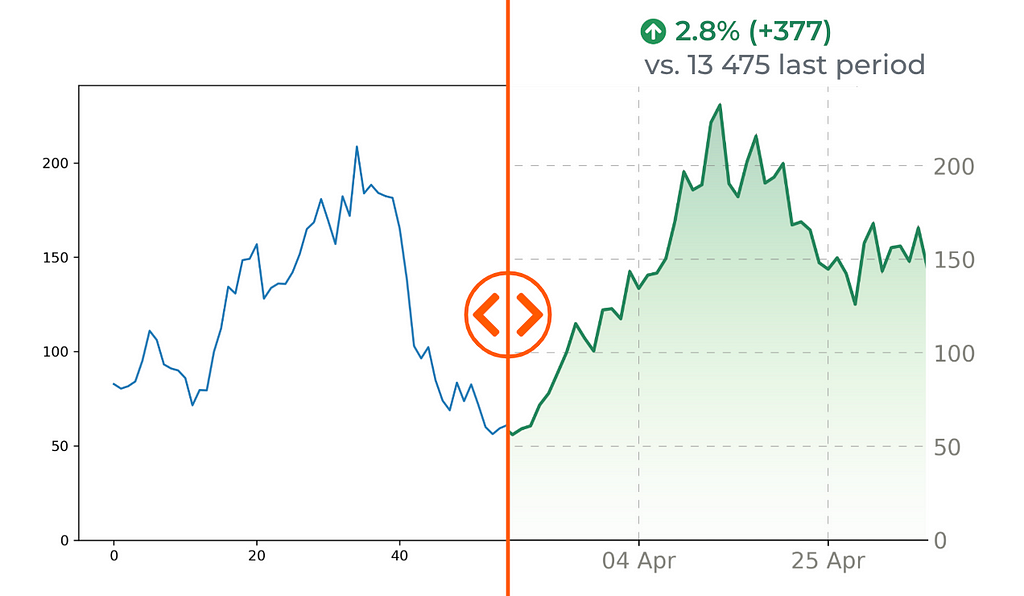
Transform boring default Matplotlib line charts into stunning, customized visualizations

Everyone who has used Matplotlib knows how ugly the default charts look like. In this series of posts, I’ll share some tricks to make your visualizations stand out and reflect your individual style.
We’ll start with a simple line chart, which is widely used. The main highlight will be adding a gradient fill below the plot — a task that’s not entirely straightforward.
So, let’s dive in and walk through all the key steps of this transformation!
Let’s make all the necessary imports first.
import pandas as pd
import numpy as np
import matplotlib.dates as mdates
import matplotlib.pyplot as plt
import matplotlib.ticker as ticker
from matplotlib import rcParams
from matplotlib.path import Path
from matplotlib.patches import PathPatch
np.random.seed(38)
Now we need to generate sample data for our visualization. We will create something similar to what stock prices look like.
dates = pd.date_range(start='2024-02-01', periods=100, freq='D')
initial_rate = 75
drift = 0.003
volatility = 0.1
returns = np.random.normal(drift, volatility, len(dates))
rates = initial_rate * np.cumprod(1 + returns)
x, y = dates, rates
Let’s check how it looks with the default Matplotlib settings.
fix, ax = plt.subplots(figsize=(8, 4))
ax.plot(dates, rates)
ax.xaxis.set_major_locator(mdates.DayLocator(interval=30))
plt.show()
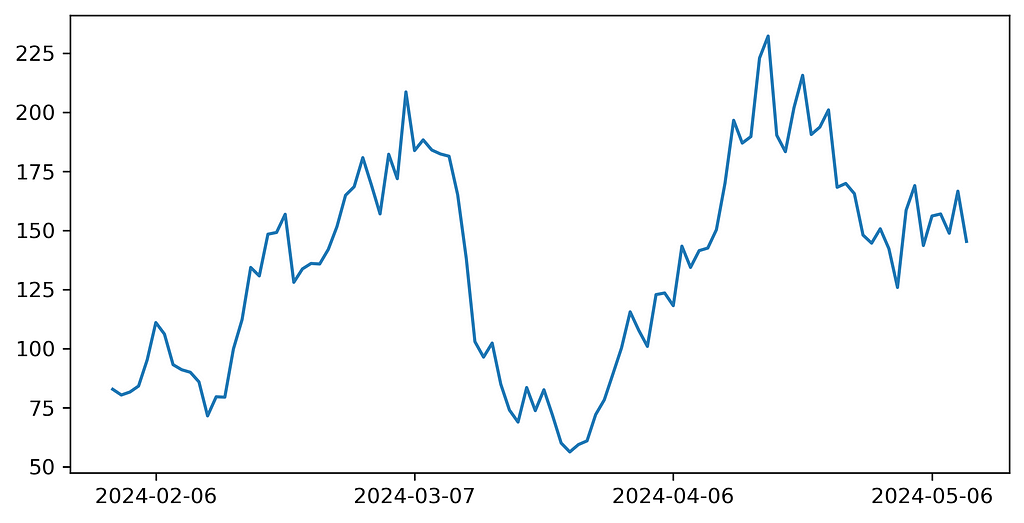
Not really fascination, right? But we will gradually make it looking better.
- set the title
- set general chart parameters — size and font
- placing the Y ticks to the right
- changing the main line color, style and width
# General parameters
fig, ax = plt.subplots(figsize=(10, 6))
plt.title("Daily visitors", fontsize=18, color="black")
rcParams['font.family'] = 'DejaVu Sans'
rcParams['font.size'] = 14
# Axis Y to the right
ax.yaxis.tick_right()
ax.yaxis.set_label_position("right")
# Plotting main line
ax.plot(dates, rates, color='#268358', linewidth=2)

Alright, now it looks a bit cleaner.
Now we’d like to add minimalistic grid to the background, remove borders for a cleaner look and remove ticks from the Y axis.
# Grid
ax.grid(color="gray", linestyle=(0, (10, 10)), linewidth=0.5, alpha=0.6)
ax.tick_params(axis="x", colors="black")
ax.tick_params(axis="y", left=False, labelleft=False)
# Borders
ax.spines["top"].set_visible(False)
ax.spines['right'].set_visible(False)
ax.spines["bottom"].set_color("black")
ax.spines['left'].set_color('white')
ax.spines['left'].set_linewidth(1)
# Remove ticks from axis Y
ax.tick_params(axis='y', length=0)
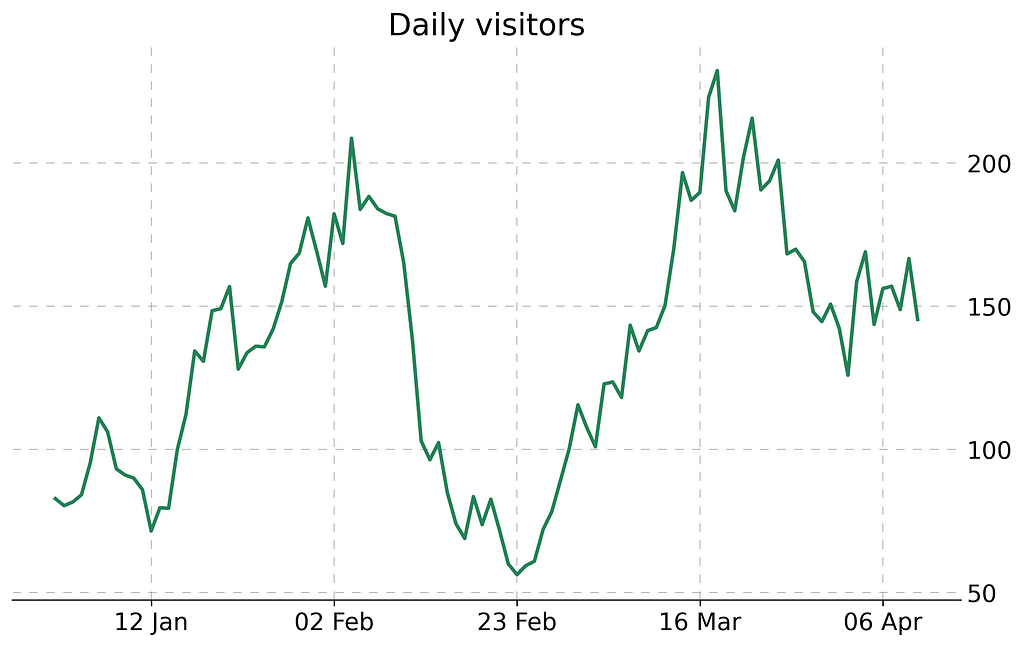
Now we’re adding a tine esthetic detail — year near the first tick on the axis X. Also we make the font color of tick labels more pale.
# Add year to the first date on the axis
def custom_date_formatter(t, pos, dates, x_interval):
date = dates[pos*x_interval]
if pos == 0:
return date.strftime('%d %b '%y')
else:
return date.strftime('%d %b')
ax.xaxis.set_major_formatter(ticker.FuncFormatter((lambda x, pos: custom_date_formatter(x, pos, dates=dates, x_interval=x_interval))))
# Ticks label color
[t.set_color('#808079') for t in ax.yaxis.get_ticklabels()]
[t.set_color('#808079') for t in ax.xaxis.get_ticklabels()]

And we’re getting closer to the trickiest moment — how to create a gradient under the curve. Actually there is no such option in Matplotlib, but we can simulate it creating a gradient image and then clipping it with the chart.
# Gradient
numeric_x = np.array([i for i in range(len(x))])
numeric_x_patch = np.append(numeric_x, max(numeric_x))
numeric_x_patch = np.append(numeric_x_patch[0], numeric_x_patch)
y_patch = np.append(y, 0)
y_patch = np.append(0, y_patch)
path = Path(np.array([numeric_x_patch, y_patch]).transpose())
patch = PathPatch(path, facecolor='none')
plt.gca().add_patch(patch)
ax.imshow(numeric_x.reshape(len(numeric_x), 1), interpolation="bicubic",
cmap=plt.cm.Greens,
origin='lower',
alpha=0.3,
extent=[min(numeric_x), max(numeric_x), min(y_patch), max(y_patch) * 1.2],
aspect="auto", clip_path=patch, clip_on=True)
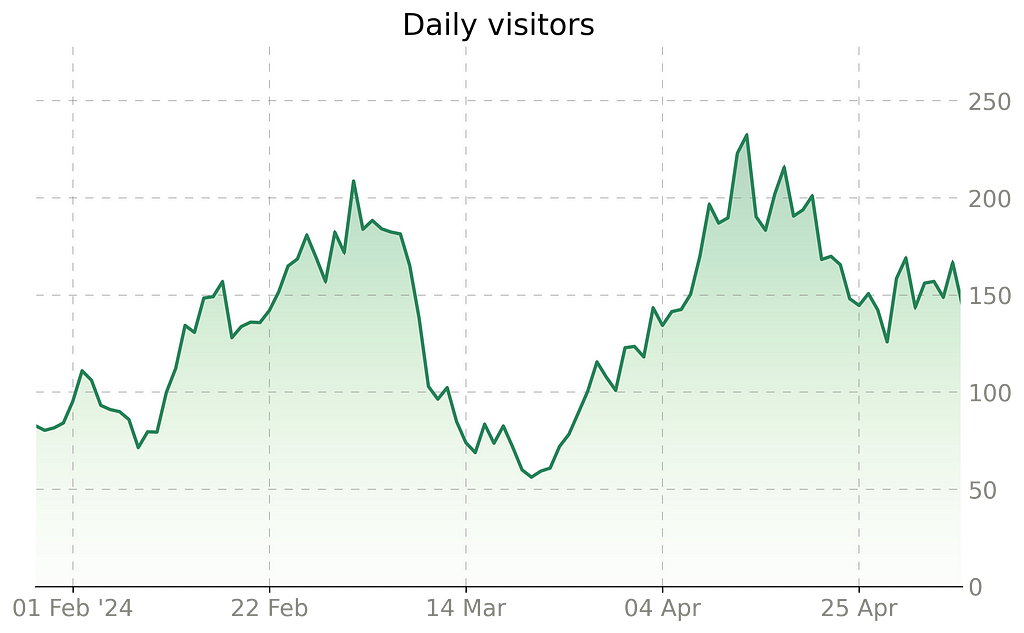
Now it looks clean and nice. We just need to add several details using any editor (I prefer Google Slides) — title, round border corners and some numeric indicators.
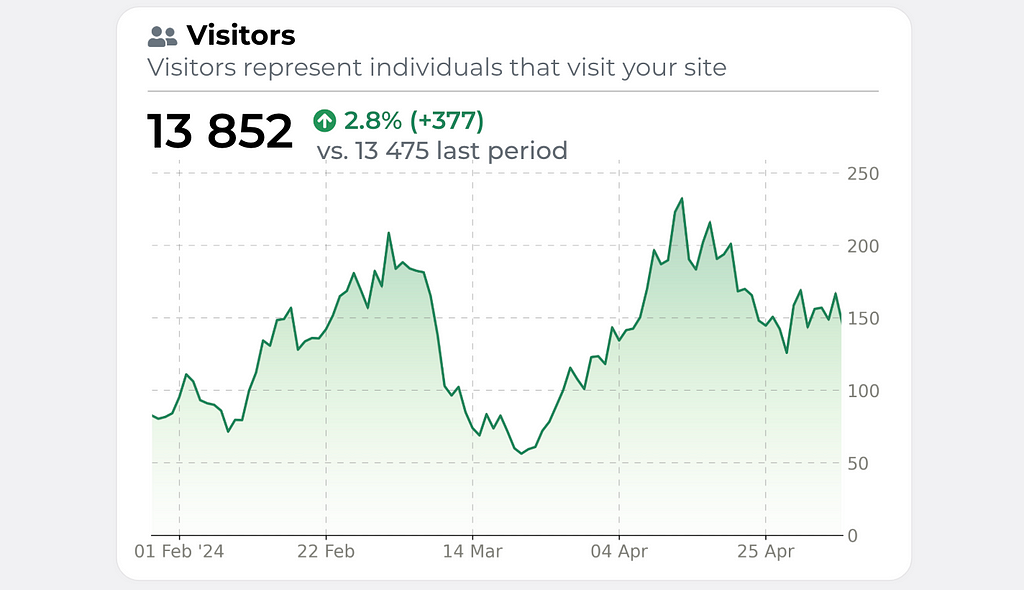
The full code to reproduce the visualization is below:
From Default Python Line Chart to Journal-Quality Infographics was originally published in Towards Data Science on Medium, where people are continuing the conversation by highlighting and responding to this story.
Originally appeared here:
From Default Python Line Chart to Journal-Quality Infographics
Go Here to Read this Fast! From Default Python Line Chart to Journal-Quality Infographics
